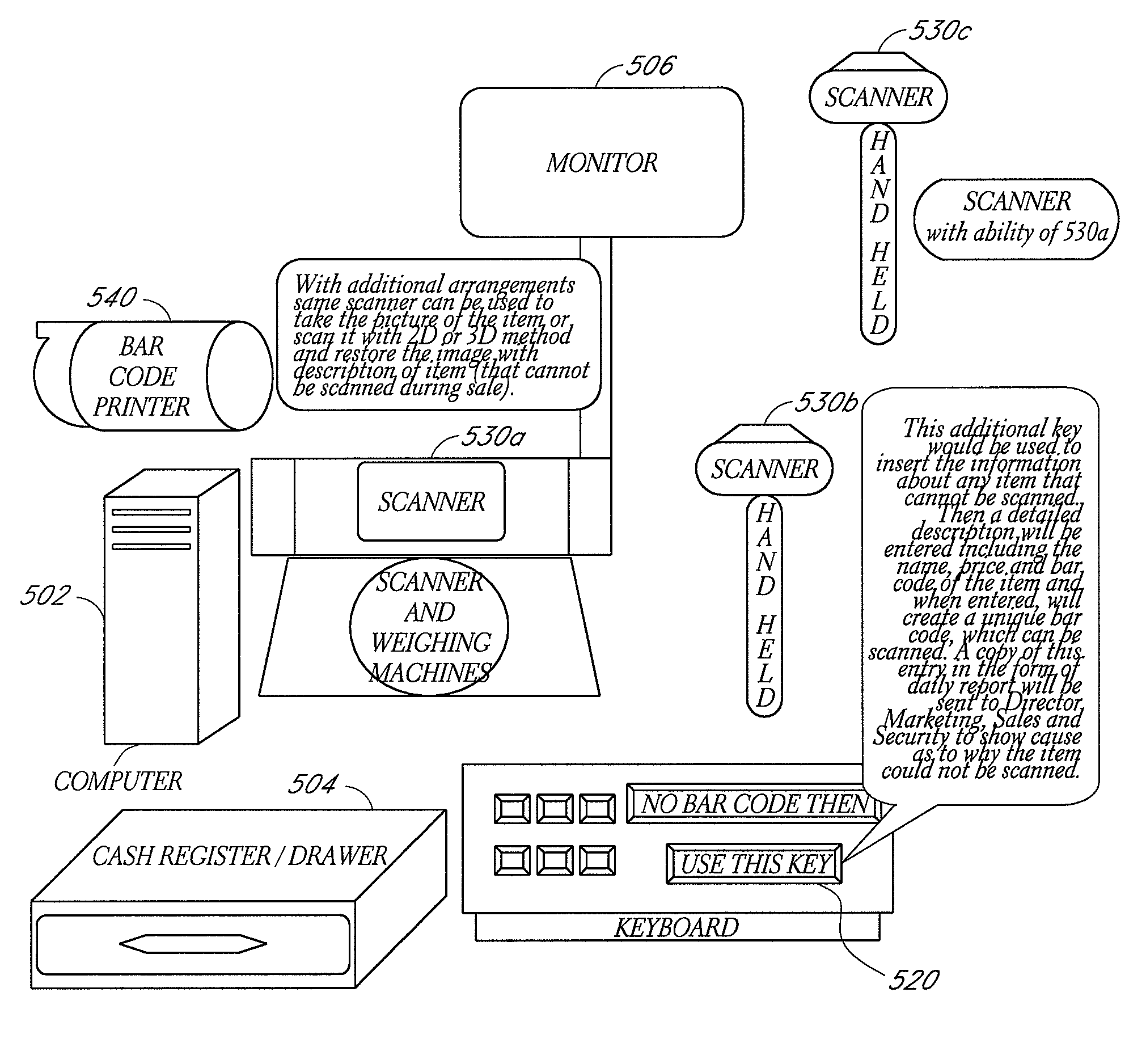Reducing internal theft at a point of sale
a technology of internal theft and point of sale, applied in the field of reducing internal theft at the point of sale, can solve the problems of shrinkage in the business, and many businesses have a flawed operational function or system at their pos terminal
- Summary
- Abstract
- Description
- Claims
- Application Information
AI Technical Summary
Benefits of technology
Problems solved by technology
Method used
Image
Examples
Embodiment Construction
[0023]A method is provided for inhibiting internal theft of items without inventory identifiers. The method comprises receiving an item for sale at a POS terminal, wherein the item is missing an inventory identifier. A determination is made as to whether a description of the item is stored in an inventory system. If the item is not stored in the inventory system, the sale of the item is inhibited in response to the determination that the description of the item is not stored in the inventory system. The entry of identifying information in the POS terminal is permitted, the identifying information configured to identify the item such that the description of the item can be stored in the inventory system.
[0024]In another aspect of the invention, the sale of the product or merchandise proceeds in response to the entry of the identifying information that is stored in the inventory control system attached with the computerized sales terminal and again the part of the Point of Sale perpet...
PUM
 Login to View More
Login to View More Abstract
Description
Claims
Application Information
 Login to View More
Login to View More - R&D
- Intellectual Property
- Life Sciences
- Materials
- Tech Scout
- Unparalleled Data Quality
- Higher Quality Content
- 60% Fewer Hallucinations
Browse by: Latest US Patents, China's latest patents, Technical Efficacy Thesaurus, Application Domain, Technology Topic, Popular Technical Reports.
© 2025 PatSnap. All rights reserved.Legal|Privacy policy|Modern Slavery Act Transparency Statement|Sitemap|About US| Contact US: help@patsnap.com



